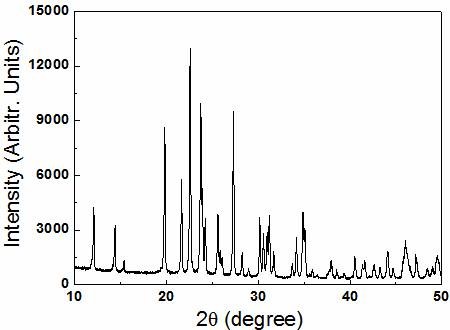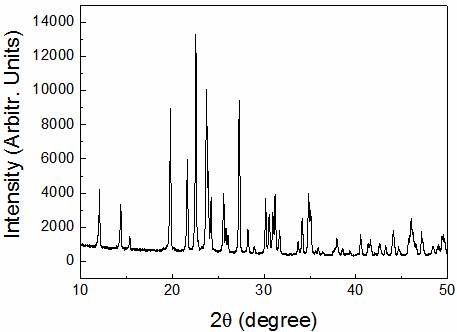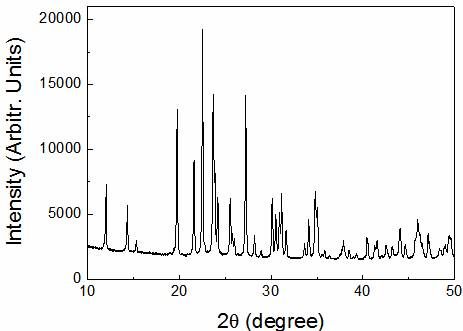Sintering synthesis method for nanometer negative expansion ceramic Zr2(WO4)(PO4)2
A synthesis method and negative expansion technology are applied in the field of sintering synthesis of nanometer negative expansion ceramic Zr22, which can solve the problems of long sintering time, long sintering time at high temperature and low product density, and achieve shortened sintering time, fast sintering speed and simple process. Effect
- Summary
- Abstract
- Description
- Claims
- Application Information
AI Technical Summary
Problems solved by technology
Method used
Image
Examples
Embodiment 1
[0025] The raw material ZrO 2 、WO 3 and P 2 o 5 Weigh it according to the stoichiometric ratio (molar ratio) Zr: W: P=2:1:2, grind it for about 0.5 h until uniform, and then add the raw material ZrO 2 、WO 3 and P 2 o 5 The total amount of 0.5 wt.% MgO, continue to grind for 1.5 h until uniform, and then at 150 o Dry at C for 6 h. After drying, grind for a few minutes to mix the raw materials evenly, and then press it into a cylinder with a diameter of 10 mm and a height of 10 mm with a uniaxial tablet press at a pressure of 300 MPa. Set up a high-temperature tube furnace to raise the temperature to a sintering temperature of 1350 °C, put the corundum crucible containing the sample into the tube furnace at the sintering temperature, sinter in normal pressure air for 10 min, take it out and quench in air. For the phase analysis of the X-ray diffraction (XRD) pattern corresponding to the product, see figure 1 , the XRD diffraction peak corresponds to PDF# 01-085-2239, indi...
Embodiment 2
[0027] The difference with embodiment 1 is: the sintering temperature is 1400 o C, the sintering time is 3 min. For the phase analysis of the XRD pattern corresponding to the product, see figure 2 , the XRD diffraction peak corresponds to PDF# 01-085-2239, indicating that the sample prepared in a short time is a pure phase of Zr 2 (WO 4 )(PO 4 ) 2 .
Embodiment 3
[0029] The difference from Example 2 is that the sintering time is 5 min, and the synthesized Zr 2 (WO 4 )(PO 4 ) 2 For the corresponding XRD phase analysis see image 3 , XRD results showed the formation of pure Zr 2 (WO 4 )(PO 4 ) 2 Mutually.
PUM
 Login to View More
Login to View More Abstract
Description
Claims
Application Information
 Login to View More
Login to View More - R&D
- Intellectual Property
- Life Sciences
- Materials
- Tech Scout
- Unparalleled Data Quality
- Higher Quality Content
- 60% Fewer Hallucinations
Browse by: Latest US Patents, China's latest patents, Technical Efficacy Thesaurus, Application Domain, Technology Topic, Popular Technical Reports.
© 2025 PatSnap. All rights reserved.Legal|Privacy policy|Modern Slavery Act Transparency Statement|Sitemap|About US| Contact US: help@patsnap.com



